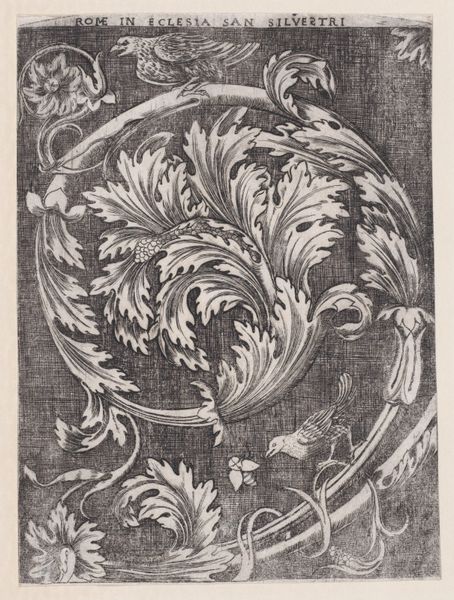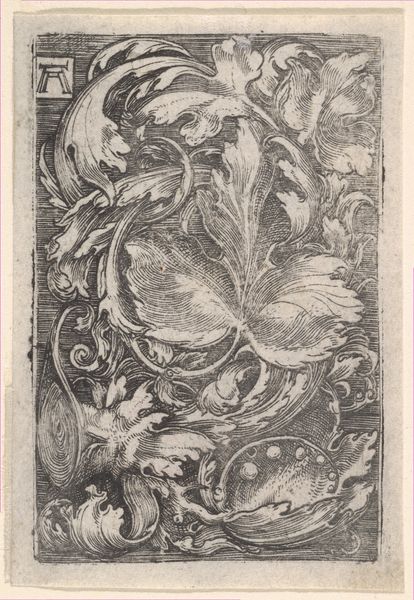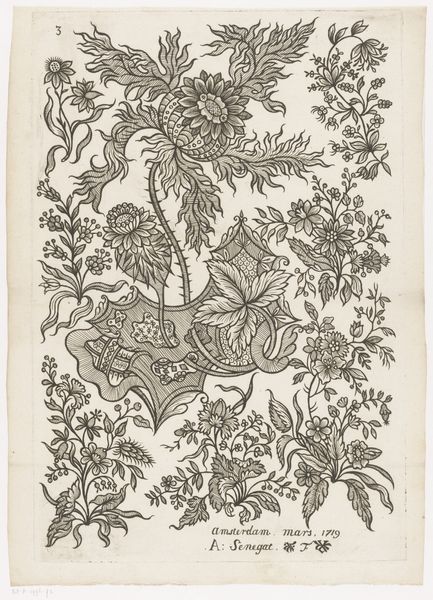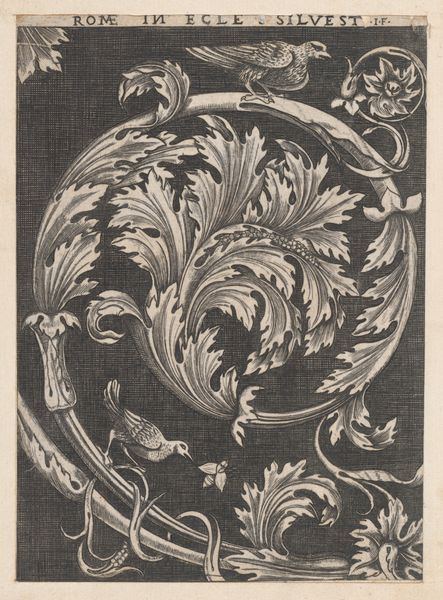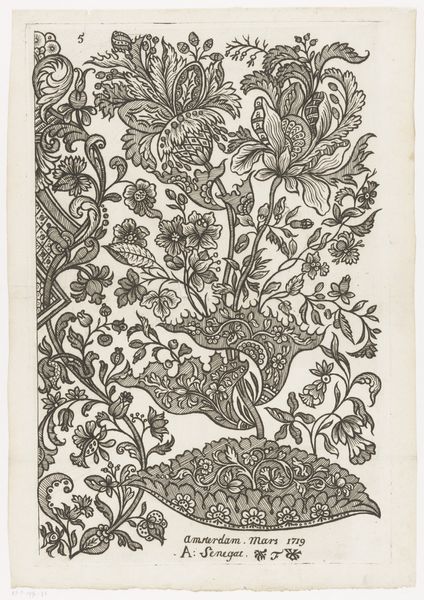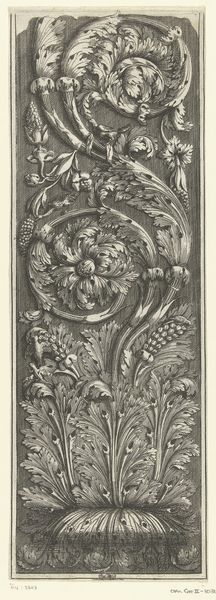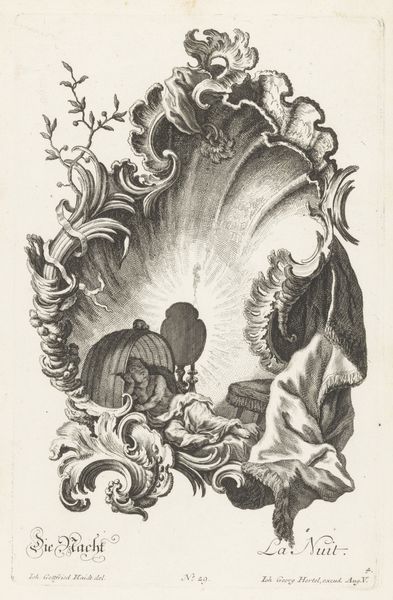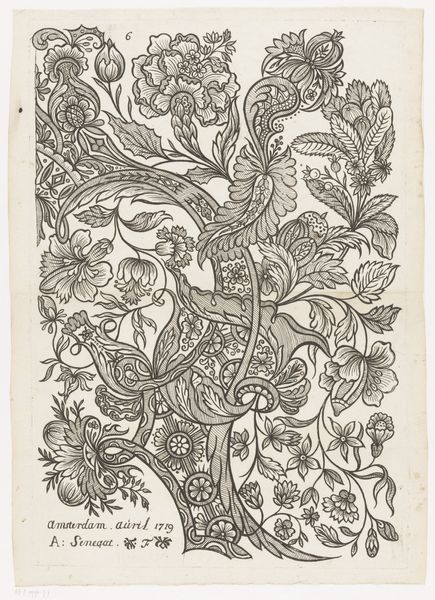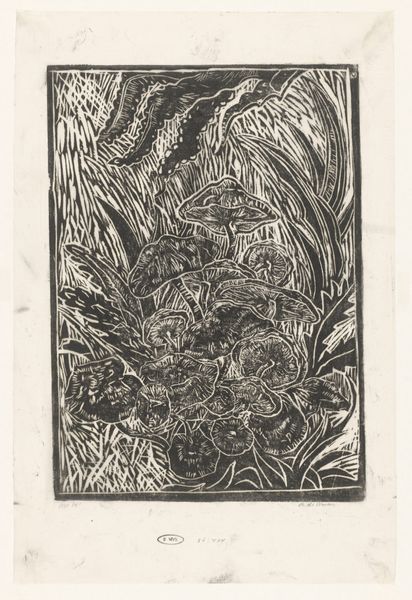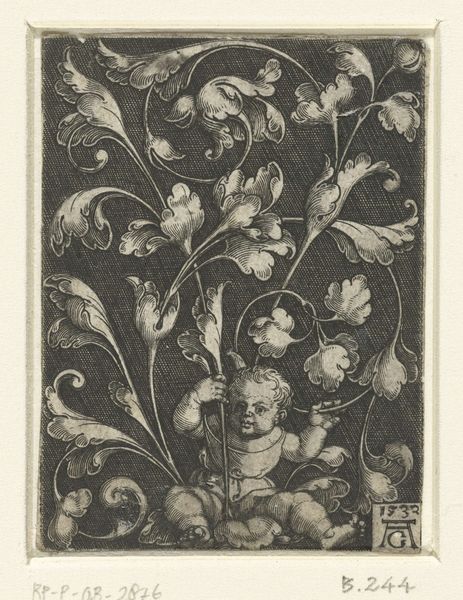
Dimensions: height 306 mm, width 233 mm
Copyright: Rijks Museum: Open Domain
Editor: This is "Hagedis," a relief print and woodcut piece by Janus de Winter, dating sometime between 1892 and 1951. The stark contrast of black and white creates an almost dizzying effect amongst all the dense flora, yet it makes the lizard figure in the center stand out quite well. What layers do you see in this work? Curator: The tension between naturalism and stylization speaks volumes. Here, de Winter isn’t just depicting a lizard in a garden; he’s participating in a broader conversation rooted in anxieties surrounding colonialism and the “exotic other” prominent during the Art Nouveau era. Think about how the "primitive" was romanticized, even weaponized, to justify imperial projects. Editor: Interesting! I never would have considered the piece in the context of colonialism. Curator: Consider the lizard, almost hidden, nestled within a tamed nature, a conquered landscape made to seem benign and attractive. What is nature really communicating in the work? Do the flowers hide it more than help express the subject? Editor: The flowers are pretty overpowering when you think about the scale. Now that you mention the context, the density of flora almost seems like an oppressive force... Curator: Exactly. The stylized natural elements trap the viewer in an artificial, constructed version of nature. This connects to the colonial project of framing "the other" within constructed narratives. The print is a small, easily distributed object too. A common trope. How does this artwork's scale add another layer to this dialogue? Editor: The small scale could mean it's something personal, almost secretive, which is compelling considering its themes. Thank you so much! That gives me so much to think about in relation to the period and the themes within this deceptively beautiful piece.
Comments
No comments
Be the first to comment and join the conversation on the ultimate creative platform.

